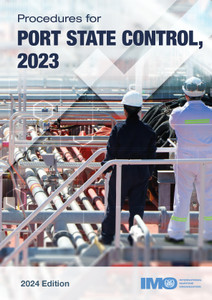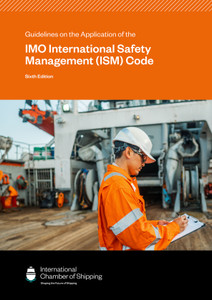
2023 Guidelines for the control and management of ships' biofouling to minimize the transfer of invasive aquatic species - 2024 Edition
The introduction of harmful aquatic organisms to new environments by ships has been identified as a major threat to world oceans and to the conservation of biodiversity.
Biofouling, described as the undesirable accumulation of microorganisms, plants, algae and animals on submerged structures (especially ships? hulls), is considered one of the main vectors for bioinvasions. These Guidelines for the control and management of ships? biofouling to minimize the transfer of invasive aquatic species are intended to provide a globally consistent approach to the management of biofouling.
Foreword
The introduction of harmful aquatic organisms to new environments by ships has been identified as a major threat to the world?s oceans and to the conservation of biodiversity. Biofouling, described as the undesirable accumulation of microorganisms, plants, algae and animals on submerged structures (especially ships? hulls), is considered one of the main vectors for bioinvasions.
These Guidelines for the control and management of ships? biofouling to minimize the transfer of invasive aquatic species are intended to provide a globally consistent approach to the management of biofouling. They were initially adopted by the Marine Environment Protection Committee (MEPC) of the International Maritime Organization at its sixty-second session, from 11 to 15 July 2011, in the form of resolution MEPC.207(62) following three years of consultation between IMO Member States, and subsequently revised following four years of consultation culminating in the adoption of the 2023 Biofouling Guidelines by the eightieth session of the MEPC, held from 3 to 7 July 2023. The Guidelines represent a decisive step towards minimizing the transfer of aquatic invasive species by ships.
Port States, flag States, coastal States and other parties that can assist in mitigating the problems associated with biofouling should exercise due diligence to implement the Guidelines to the maximum extent possible. Implementing practices to control and manage biofouling can greatly assist in reducing the risk of transfer of invasive aquatic species. Such management practices can also improve a ship?s hydrodynamic performance and can be effective tools in enhancing energy efficiency and reducing air emissions from ships.
Contents
Foreword
Abbreviations
1 Introduction
2 Definitions
3 Application
4 Objectives
5 Design and construction
6 Anti-fouling system installation and maintenance
Choosing an AFS
Installing the AFS
Reinstalling, reapplying or repairing the AFS
7 Contingency action plans
8 Inspection
Extent of biofouling and recommended actions
Condition of the AFS
Inspection report
9 Cleaning and maintenance
Procedures for proactive cleaning
Procedures for reactive cleaning
Procedures for recycling facilities
10 Biofouling Management Plan
Continuous improvements
11 Biofouling Record Book
12 Documentation and dissemination of information
13 Training and education
14 Other measures
Appendices:
Appendix 1 Assessment of biofouling risk
Appendix 2 Inspection and cleaning reports
Appendix 3 Example form of Biofouling Management Plan
Appendix 4 Example form of Biofouling Record Book
IMO
As a specialised agency of the United Nations, the International Maritime Organization (IMO) is the global standard-setting authority for the safety, security and environmental performance of international shipping. Its main role is to create a regulatory framework for the shipping industry that is fair and effective, universally adopted and universally implemented.
In other words, its role is to create a level playing field so that ship operators cannot address their financial issues by simply cutting corners and compromising on safety, security and environmental performance. This approach also encourages innovation and efficiency.
Shipping is a truly international industry, and it can only operate effectively if the regulations and standards are themselves agreed, adopted and implemented on an international basis. And IMO is the forum at which this process takes place.
- Number of Pages:
- 0
- Published Date:
- April 2024
- Book Height:
- 0 mm
- Book Width:
- 0 mm
- Publication Date:
- April 2024
- Author:
IMO





